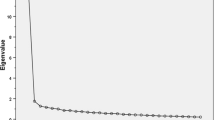Abstract
The Behçet’s Disease Current Activity Form (BDCAF) is a clinical instrument used to assess the activity of Behçet’s disease (BD), which was originally developed in English. The aim of the present study was to perform a cross-cultural adaptation of the BDCAF to Brazilian Portuguese language and to evaluate its reliability in a population of Brazilian patients with BD. Brazilian Portuguese version of the BDCAF, named BR-BDCAF, was obtained according to established guidelines. Forty Brazilian patients with BD diagnosed according to the International Study Group for Behçet’s Disease criteria were assessed by two rheumatologists in independent sessions and submitted to the BR-BDCAF. Inter- and intraobserver agreement were then evaluated by kappa scores (values higher than 0.6 indicated good agreement). Good inter- and intraobserver agreements were achieved for the most common manifestations of BD: kappa scores higher than 0.6 were obtained for oral and genital ulcerations, skin lesions, and articular and general complaints. Moderate interobserver agreement was obtained for ocular activity (kappa 0.483) and fair interobserver agreement was obtained for gastrointestinal (kappa 0.322), major vessel (kappa 0.281), and central nervous system activity (kappa 0.304). BR-BDCAF was found to be a reliable instrument for the classic mucocutaneous and articular manifestations of BD and for general complaints, but complementary assessment is needed to evaluate specific visceral involvement for disease activity.
Similar content being viewed by others
References
Sakane T, Takeno M, Suzuki N, Inaba G (1999) Behçet’s disease. N Engl J Med 21:1284–1291
Yurdakul S, Hamuryudan V, Yazici H (2004) Behçet syndrome. Curr Opin Rheumatol 16:38–42
Barnes CG, Yazici H (1999) Behçet’s syndrome. Rheumatology 38:1171–1176
Bhakta BB, Brennan P, James TE, Chamberlain MA, Noble BA, Silman AJ (1999) Behçet’s disease: evaluation of a new instrument to measure clinical activity. Rheumatology 38:728–733
International Study Group for Behçet’s Disease (1990) Criteria for diagnosis of Behçet’s disease. Lancet 335:1078–1080
Barnes CG (1999) Behçet’s syndrome—classification criteria. Ann Med Intern 150:477–482
Baltaci M (2005) A review on disease activity scores in Behçet’s disease. Arthritis Res Ther 5(Suppl 2):7
Hamuryudan V, Fresko J (1999) Evaluation of the Turkish translation of a disease activity form for Behçet’s syndrome. Rheumatology 38:734–736
Lawton G, Bhakta BB, Chamberlain MA, Tennant A (2004) The Behçet’s disease activity index. Rheumatology 43:73–78
Monastero R, Camarda C, Pipia C, Lopez G, Camarda LKC, Baiamonte V, Ferrante A, Triolo G, Camarda R (2004) Cognitive impairment in Behçet’s disease patients without overt neurological involvement. J Neurol Sci 220:99–104
Bodur H, Borman P, Ozdemir Y, Atan C, Kural G (2006) Quality of life and life satisfaction in patients with Behçet’s disease: relationship with disease activity. Clin Rheumatol 25:329–333
Guillemin F, Bombardier C, Beaton D (1993) Cross-cultural adaptation of health related quality of life measures: literature review and proposed guidelines. J Clin Epidemiol 46:1417–1432
Beaton DE, Bombardier C, Guillemin F, Ferraz MB (2000) Guidelines for the process of cross-cultural adaptation of self-report measures. Spine 25:3186–3191
Acknowledgements
The authors are grateful to Dr. Bhakta and Dr. Chamberlain from Leeds for their advice during this study; to the language teachers Maria Beatriz Leite, Lucille Vogel, and Claudio Bizoochi; and to the statistics specialist Creuza Dal Bó.
Author information
Authors and Affiliations
Corresponding author
Rights and permissions
About this article
Cite this article
Neves, F.S., Moraes, J.C.B., Kowalski, S.C. et al. Cross-cultural adaptation of the Behçet’s Disease Current Activity Form (BDCAF) to Brazilian Portuguese language. Clin Rheumatol 26, 1263–1267 (2007). https://doi.org/10.1007/s10067-006-0484-y
Received:
Revised:
Accepted:
Published:
Issue Date:
DOI: https://doi.org/10.1007/s10067-006-0484-y




